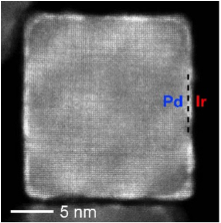Author Interviews, Biomarkers, Cleveland Clinic, Genetic Research, Personalized Medicine, Prostate, Prostate Cancer, Urology / 07.03.2016
Decipher Genomic Testing Moves Prostate Cancer Prognosis into Precision Medicine Era
MedicalResearch.com Interview with:
Eric A. Klein, MD
Chairman, Glickman Urological and Kidney Institute
Cleveland Clinic
MedicalResearch.com: What is the background for this study? What are the main findings?
Dr. Klein: Prostate cancer is an enigma. While this tumor is the second leading cause of cancer death among American men, most newly diagnosed disease detected by PSA screening is biologically indolent and does not require immediate therapy. Currently, the main clinical challenge in these men is to distinguish between those who can be managed by active surveillance from those who require curative intervention. Current clinical and pathological tools used for risk stratification are limited in accuracy for distinguishing between these scenarios.
An abundance of research in the last decade has provided evidence that genomics can offer meaningful and clinically actionable biological information to help inform decision making, and current National Comprehensive Cancer Network (NCCN) guidelines on prostate cancer endorse the use of commercially available genomic tools for men considering active surveillance.[1] It has been previously shown that the 22-gene genomic classifier, Decipher, accurately predicts the likelihood of metastasis and prostate cancer specific mortality when measured on tissue from radical prostatectomy specimens.[2] In multiple validation studies, it performed with higher accuracy and discrimination compared to clinical risk factors alone.
The current study[3] is the first to examine whether the use of Decipher might aid decision making when measured on biopsy tissue at the time of diagnosis. Men with available needle biopsy samples were identified from a study cohort that previously had Decipher performed on their matched radical prostatectomy tissue. In this cohort of mixed low, intermediate and high risk men, Biopsy Decipher predicted the risk of metastasis 10 years post RP with high accuracy, outperforming NCCN clinical risk categorization, biopsy Gleason score and pre-operative PSA. Furthermore, this study showed that Decipher reclassified 46% of patients into lower or higher risk classification compared to NCCN classification alone. The study also showed that Biopsy Decipher can identify men that are at high risk for adverse pathology as defined by the presence of primary Gleason pattern 4 or greater.
(more…)













